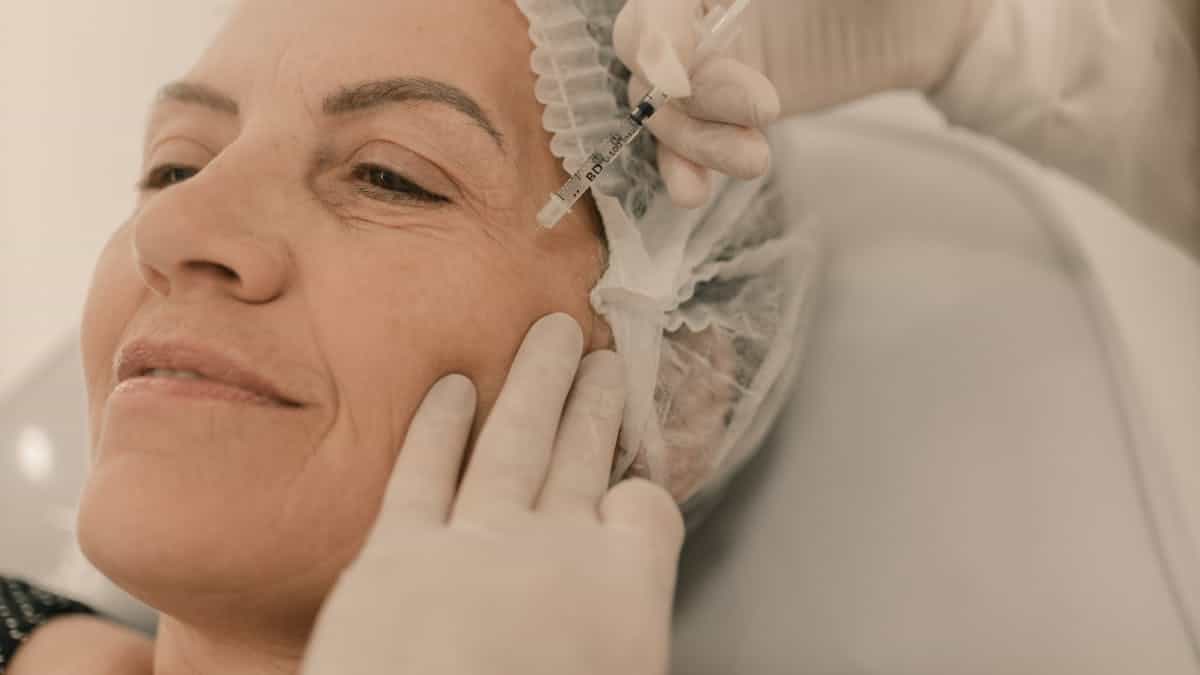Here is your complete guide to pillow face filler.
Introduction to Pillow Face Filler
In the world of cosmetic enhancements, pillow face filler has become a popular term that refers to an undesirable aesthetic result often associated with overuse of dermal fillers. As more people seek to enhance their facial features through non-surgical procedures, it’s crucial to understand what pillow face filler is, its causes, and how to avoid it. This article will delve into the intricacies of pillow face filler, providing insights into its characteristics, prevention strategies, treatment options, and more.
The importance of understanding pillow face filler cannot be overstated. With the rise in popularity of cosmetic procedures, many individuals may not be fully aware of the risks associated with overfilling and incorrect application techniques. Throughout this article, we will explore the nuances of pillow face filler while emphasizing the significance of informed choices in aesthetic treatments.
By the end of this comprehensive guide, you will have a clearer understanding of what pillow face filler is and how to achieve natural-looking results in your aesthetic journey.
What is Pillow Face?
Definition and Description
Pillow face refers to a specific appearance that can result from excessive use of dermal fillers in the cheeks or other areas of the face. This condition is characterized by a puffy, inflated look that can detract from an individual’s natural beauty. While fillers are designed to enhance facial contours and provide volume, when used improperly or excessively, they can lead to an unflattering outcome.
Causes of Pillow Face
Several factors contribute to the development of pillow face:
- Overfilling: The most common cause; injecting too much filler can lead to an unnatural appearance.
- Incorrect Placement: Poor injection techniques can result in uneven distribution of filler.
- Filler Migration: Sometimes fillers can move from their original injection site, causing puffiness in unintended areas.
Common Causes of Pillow Face
| Cause | Description |
|---|---|
| Overfilling | Excessive use of dermal fillers leading to puffiness. |
| Incorrect Placement | Poor injection technique resulting in unnatural appearance. |
| Filler Migration | Movement of filler from the original site causing unevenness. |
Understanding these causes is vital for both practitioners and patients to avoid achieving a pillow face look.
Types of Fillers and Their Impact
Overview of Common Dermal Fillers
There are several types of dermal fillers available on the market today, each with unique properties:
- Hyaluronic Acid Fillers: These are among the most popular due to their natural compatibility with human tissue. They provide hydration and volume but can also lead to overfilling if not used judiciously.
- Calcium Hydroxylapatite Fillers: These are thicker than hyaluronic acid fillers and typically used for deeper lines and wrinkles. They can create a more substantial volume effect but also carry a risk if overused.
How Different Fillers Contribute to Pillow Face
The choice of filler significantly impacts the risk of developing pillow face:
- Hyaluronic Acid: While generally safe, excessive amounts can cause swelling.
- Calcium Hydroxylapatite: Its thicker consistency may lead to more pronounced puffiness if not injected correctly.
Choosing the Right Filler
Selecting the appropriate filler based on individual facial anatomy is crucial. Here are some tips:
- Consult with a board-certified practitioner who understands your facial structure.
- Discuss your aesthetic goals and concerns openly.
- Consider starting with smaller amounts to assess how your body reacts before proceeding with additional treatments.
Prevention Strategies for Pillow Face
Preventing pillow face requires careful planning and execution. Here are several effective strategies:
Consultation with Experienced Practitioners
One of the most critical steps in preventing pillow face is ensuring that you consult with experienced and board-certified injectors. A skilled practitioner will have the knowledge and expertise necessary to achieve natural-looking results while minimizing risks.
Microdosing Technique
Microdosing involves using smaller amounts of filler during each session rather than injecting a large volume at once. This technique allows for gradual enhancement and reduces the likelihood of overfilling.
Gradual Layering Method
The gradual layering method involves applying fillers incrementally over multiple sessions. This approach helps maintain a natural appearance while allowing for adjustments based on how your body responds.
Prevention Techniques
| Technique | Description |
|---|---|
| Microdosing | Using minimal amounts to achieve desired results over time. |
| Gradual Layering | Incremental filling to maintain natural appearance while allowing adjustments. |
By employing these techniques, patients can significantly reduce their chances of experiencing pillow face.
Treatment Options for Pillow Face
If you or someone you know has developed pillow face as a result of dermal fillers, there are various treatment options available:
Non-Surgical Treatments
- Hyaluronidase Injections:
- Hyaluronidase is an enzyme that dissolves hyaluronic acid fillers. It can be used effectively to reverse unwanted effects caused by overfilling.
- Results are typically visible within 24 hours.
- Laser Therapy:
- Laser treatments can help improve skin texture and reduce swelling associated with pillow face.
- Multiple sessions may be required for optimal results.
Surgical Options
In some cases where non-surgical options are ineffective or if there is significant distortion, surgical intervention may be considered:
- Fat Removal Surgery: In extreme cases, surgical fat removal may be necessary to correct an overly puffy appearance.
Effectiveness and Recovery Times
- Hyaluronidase Injections: Minimal downtime; patients can resume normal activities immediately.
- Laser Therapy: Some redness or swelling may occur post-treatment; recovery typically takes a few days.
- Surgical Options: Longer recovery times; patients should expect bruising and swelling for several weeks.
Risks and Side Effects
While dermal fillers are generally safe when administered by qualified professionals, there are potential side effects:
Common Side Effects of Fillers
- Swelling
- Bruising
- Tenderness at injection sites
Long-Term Risks Associated with Improper Use
Improper use or excessive filling can lead to long-term complications such as:
- Persistent pillow face
- Uneven contours
- Skin necrosis (in rare cases)
Understanding these risks is essential for anyone considering cosmetic enhancements.
Common Mistakes to Avoid When Using Pillow Face Filler
When it comes to cosmetic enhancements, particularly with dermal fillers, achieving a natural look is paramount. However, many individuals fall victim to common mistakes that can lead to an undesirable appearance known as pillow face. This condition, characterized by excessive puffiness and loss of facial contours, can be avoided with careful planning and execution. Here are some of the most common mistakes to avoid when considering pillow face fillers.
1. Overfilling
One of the most significant mistakes is overfilling the treatment areas. Injecting too much filler can distort natural facial proportions, leading to a rounded and swollen appearance. This is particularly prevalent in areas like the cheeks, where excess volume can create a balloon-like effect.
- Tip: Start with a conservative amount of filler and gradually increase if necessary. This approach allows for adjustments based on how your face responds.
2. Incorrect Placement
Even if the right amount of filler is used, incorrect placement can lead to pillow face. Injecting filler into the wrong layer of tissue or at an inappropriate site can result in unevenness and unnatural smoothness.
- Tip: Choose a qualified injector who understands facial anatomy and has experience with dermal fillers. Proper technique is essential for achieving balanced results.
3. Filler Migration
Another common issue is filler migration, which occurs when the filler moves from its original injection site over time. This can lead to puffiness in unintended areas and an overall distorted appearance.
- Tip: Avoid excessive manipulation of the treated areas post-injection, as this can contribute to migration. Follow your injector’s aftercare instructions closely.
4. Choosing Inexperienced Injectors
Opting for an inexperienced injector can significantly increase the risk of negative outcomes, including pillow face. An injector without proper training may lack the skills necessary to achieve natural-looking results.
- Tip: Research potential injectors thoroughly. Look for board-certified professionals with positive reviews and before-and-after photos that demonstrate their expertise.
5. Unrealistic Expectations
Many patients come into treatments with unrealistic expectations, believing that fillers will dramatically change their appearance overnight. This mindset can lead to dissatisfaction and a desire for excessive filler.
- Tip: Have an open discussion with your injector about what fillers can realistically achieve based on your facial structure and goals. Setting achievable expectations is key to satisfaction.
6. Ignoring Facial Proportions
Failing to consider facial proportions can result in an unbalanced look. For example, adding too much volume to one area without addressing others can throw off your overall aesthetic harmony.
- Tip: Discuss your facial proportions with your injector, ensuring they take a holistic approach when planning your treatment.
Avoiding these common mistakes when using pillow face fillers is crucial for achieving a natural and aesthetically pleasing result. By prioritizing proper technique, choosing experienced injectors, and maintaining realistic expectations, you can enhance your appearance without falling victim to the pitfalls of overfilling or incorrect placement. Always consult with qualified professionals who understand the nuances of facial anatomy and can guide you toward safe and effective treatments.
Read Also: Skin Color Bikini.
FAQs about Pillow Face Filler
What causes pillow face?
Pillow face is primarily caused by overfilling with dermal fillers, incorrect placement during injections, or migration of filler material from its original site.
Read Also: Jawline Filler Before and After.
Can pillow face be reversed?
Yes, pillow face can often be reversed through non-surgical treatments like hyaluronidase injections or laser therapy.
Read Also: Can You Have Sex After Botox?
How long do filler treatments last?
The longevity of filler treatments varies depending on the type used but generally lasts between 6 months to 2 years.
Read Also: How Bad Does Lip Filler Hurt?
Are there specific demographics more prone to pillow face?
While anyone receiving dermal fillers can develop pillow face, individuals who opt for aggressive filling techniques or those receiving treatment from inexperienced practitioners are at higher risk.
Read Also: Chin Filler Cost.
Conclusion
Understanding pillow face filler is crucial for anyone considering dermal fillers as part of their aesthetic journey. By recognizing what causes this condition and implementing effective prevention strategies, individuals can achieve beautiful results without compromising their natural appearance.
Read Also: Before and After Face Fillers.
In summary:
- Consult experienced practitioners who prioritize safety.
- Consider microdosing and gradual layering techniques.
- Be aware of potential risks associated with improper use.
Read Also: Can You Smile After Lip Fillers?
With informed choices and proper care, achieving your desired aesthetic goals while avoiding unwanted outcomes like pillow face is entirely possible. Always prioritize safety and seek professional guidance throughout your cosmetic journey!
Read Also: Instant Lip Filler.
References and Resources Used in This Article:
- Fillers and How to Avoid Pillow Face – Mulberry House Clinic
- How to Prevent Pillow Face from Long-Term Dermal Fillers Usage – Amaris B
- Filler Dilemma: What is Pillow Face and How Can You Avoid It? – Cutis Laser Clinics
- Myomodulation with Facial Fillers: A Comprehensive Technical Guide – PMC
- Exploring Facial Overfilled Syndrome from the Perspective of Anatomy – PubMed
- What is ‘Pillow Face’ and How Can You Address It? – Woman & Home

